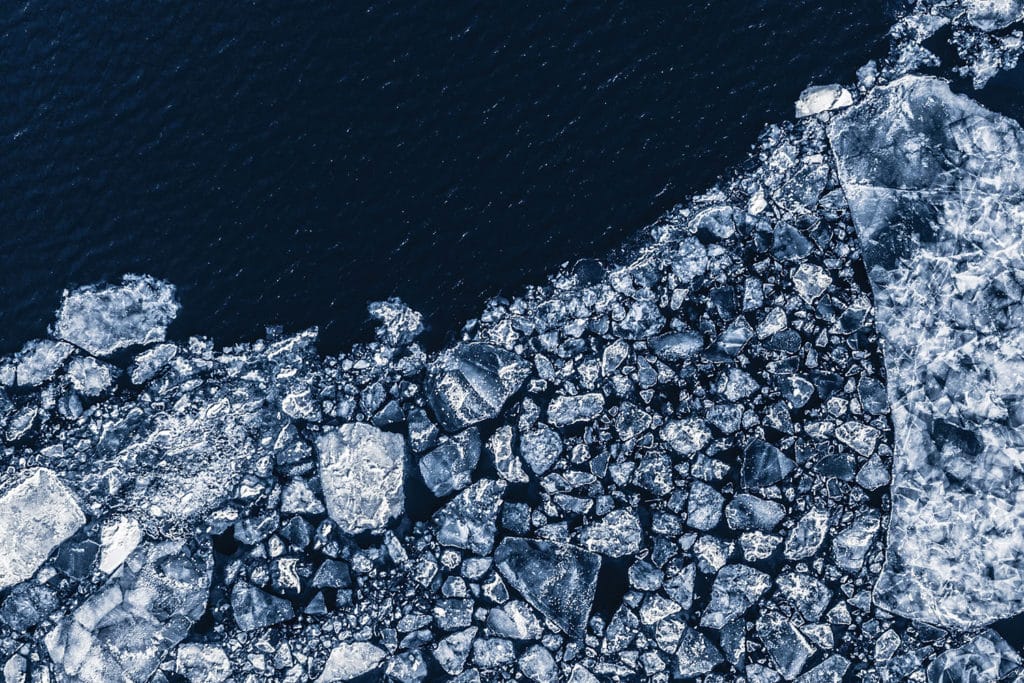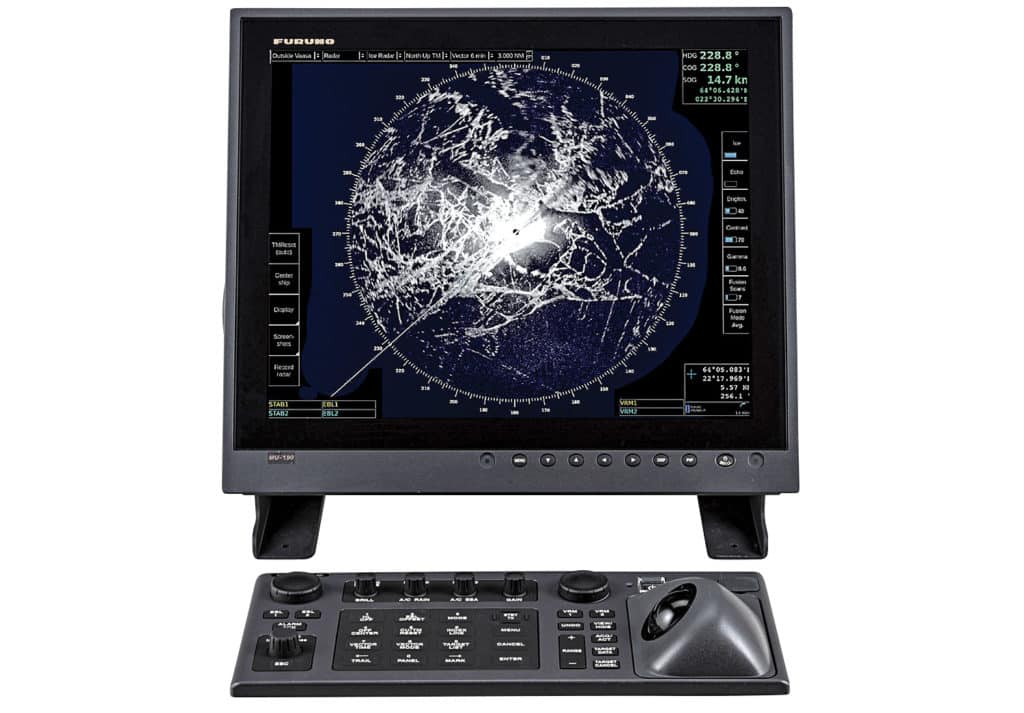
During his crew’s first northwest passage attempt in 1994, a massive closing ice pack threatened Roger Swanson’s plans. He tied up behind a grounded ice floe to protect himself and all souls aboard, but for three or four days, things were looking pretty grim. Then the wind shifted, and they escaped through 5 miles of passable, but somewhat concentrated, ice.
Swanson returned twice more aboard Cloud Nine, his 1975 Bowman 57 cutter-rigged ketch, and — in 2007 — became the first person to skipper an American-flagged boat east to west through the Northwest Passage. He completed that bold journey using basic electronics, relying on hard-earned skills acquired over 217,928 nautical miles, including three circumnavigations, three Cape Horn roundings, and multiple Arctic and Antarctic “cruises.”
Maritime history is rife with accounts of explorers like Swanson braving high-latitude elements using equal parts skill, experience, persistence and patience. Fortunately, modern mariners have electronic tools that — while no substitute for seamanship and sturdy vessel construction — provide increased situational awareness and bolster good decision-making.
One such technology is Furuno’s FICE-100 Ice Detecting Radar, designed to help captains find the best route through pack ice, mitigating risk and potentially saving time, fuel and even lives.
Unlike navigation radars, which detect vessels, objects and landmasses to help prevent collisions, the FICE-100 is a secondary processor, a kind of downstream black box. It takes the raw feed from a Furuno X-band radar’s automatic radar plotting aid (ARPA) processor to create detailed composite, or, in Furuno’s parlance, “fusion,” images of the surrounding pack ice.
FICE-100 modules ($40,000) can be networked to any compatible Furuno X-band radar ($11,000 to $40,000) via Ethernet and then connected to a dedicated or shared display.
Matt Wood, Furuno USA’s national sales manager, says that in cruising grounds such as Scandinavia, wintertime navigation is usually only possible with ice-breaking vessels. “Open trails can be navigated without an icebreaker, but they’re not readily apparent to a navigation radar or the naked eye,” he says. “You need a radar with advanced signal processing to find the breaks.”
By employing advanced algorithms and concentrating on the returning echoes from the lower portion of the radar’s transmitted vertical beam, the FICE-100 lowers the signal’s noise floor to capture fine details in the returns (imagine an ultra-powerful, downward-looking “bird mode” feature).

“Ice radar wants to magnify clutter,” Wood says. “Navigation radars use a few sweeps to paint a picture, but the FICE-100 uses a composite of sweeps, tiling or layering one on top of the other, to [determine] what’s solid ice and what’s open water.”
Users select the number of sweeps — from one to 100 — that the FICE-100 uses to create its composite imagery, and older sweeps fall off the composite image as newer sweeps are gathered. Given that Furuno X-band radars operate at 24 rpm, a FICE-100 takes four minutes and 16 seconds to create a 100-sweep composite radar image. That amount of time is also the longest shelf life of any individual sweep, and the unit updates its imagery every 2.5 seconds.
While the FICE-100 was designed for commercial vessels, it also works for go-everywhere yacht owners. The FICE-100 can share its imagery with a Furuno TZtouch2 multifunction display or a black-box processor. Furuno’s X-band radars can also be networked to the same MFDs and black boxes, allowing users to dedicate screens on a glass bridge for navigation and ice-radar views.
Unlike navigation radars that can provide ranges approaching the triple-digit mark, the FICE-100 delivers a range of 3 to 6 nautical miles.
“For the purposes of navigation, the FICE-100 is focused on finding an open pathway through the ice,” Wood says, adding that most vessels in such conditions operate at speeds of 0.5 to 5 knots, making the job one of threading needles, not dodging bullets. “We’re not looking for ice at 96 nautical miles.”
Likewise, since tracking other vessels isn’t the FICE-100’s mission, it can’t leverage the main radar’s ARPA functionality to track individual icebergs. However, users can designate those objects as targets on their main navigational radar or track them via a networked camera system (see “Eyeing Icebergs,” above).

| Solid-State Speed | Quantum Leap | Magic (Steering) Wand |
|---|---|---|
| Airmar Technology Corp., airmar.com | Raymarine, raymarine.com | Furuno USA, furunousa.com |
| Airmar’s UDST800 Ultrasonic Smart Sensor ($1,030) provides yacht helmsmen of all stripes with distance, speed and temperature information in a single, solid-state, and might we say elegant, housing. The UDST800 shows precise readings and has a reporting rate as fast as 10 hertz, making it a match for vessels of most sizes, speeds and types (including sailing yachts). It automatically configures itself for different water depths, water-clarity levels and vessel velocities. | Raymarine’s Quantum 2 ($1,949) radar has a solid-state power amplifier, chirp technology, and algorithms that deliver Doppler processing. Quantum 2 radars are designed to make boats safer by working with Raymarine’s Axiom multifunction displays to paint potentially dangerous targets red on-screen while rendering nonthreatening traffic green. The radar has Raymarine’s Safety Sector, which evaluates all stationary targets within 655 feet of the vessel. | ch LCD and a remote Gesture Controller. Users press a button, point the Gesture Controller in the desired direction and then release the button, and the NavPilot 300 changes the boat’s course. The NavPilot 300’s self-learning software allows it to master a vessel’s handling characteristics, and it can execute driving patterns (such as zigzag or orbit), making it equally handy for sport fishing or man-overboard retrieval. |
“A savvy navigator is looking back and forth between navigation and ice-radar screens,” Wood says, “and when he sees [an iceberg], he’ll track it with the nav radar.”
A FICE-100 operates independently of — and without compromising or influencing — the main navigation radar’s processor, allowing navigators to find old tracks through the ice, saving time and fuel.
Looking to the future, Furuno is working on its next-generation ice-radar technology, which, Wood says, will deliver ice-ranging and ice-thickness information. The company is also developing radar/sonar technology that looks for ice above and below the waterline and determines the thickness of submerged ice.
“The challenge is imaging it all in real time, as it takes a huge amount of video processor [capability],” Wood says. “It’s going to require something like James Cameron’s Avatar project, there will be so much data.”
In terms of costs, a FICE-100-enabled radar installation fetches between $51,000 and $80,000, which, Wood says, is cost-competitive with other ice-routing technologies such as thermal-imaging cameras. Current FICE-100-equipped vessels include the U.S. Coast Guard’s Healy and Polar Star icebreakers, as well as commercial ships that operate in the high latitudes during the dark months.
“It’s one thing to be around bergy bits, but realistically, you need a well-fortified yacht to travel in pack ice,” Wood says. “As polar navigation opens up interest and requirements for the technology, it’s exciting to be providing a solution that works.”
So, if you have high-latitude dreams like Roger Swanson’s but don’t have a lifetime to undertake the three multimonth expedition-style attempts that he required aboard Cloud Nine to reach Alaska, Furuno’s FICE-100 paired with an X-band radar could be the difference between success and a long, cold winter.
Eyeing Icebergs
While Furuno’s FICE-100 can’t leverage its networked radar’s ARPA capabilities to acquire and track icebergs, the radar can be networked with compatible FLIR thermal-imaging cameras to provide target video tracking. This slew-to-cue functionality allows a radar to tell a camera where to point its lens in order to track one or more targets. “The FICE-100 and an X-band radar can drive the cameras,” says Furuno’s Matt Wood, adding, “We have done a lot of separate development with FLIR.”









